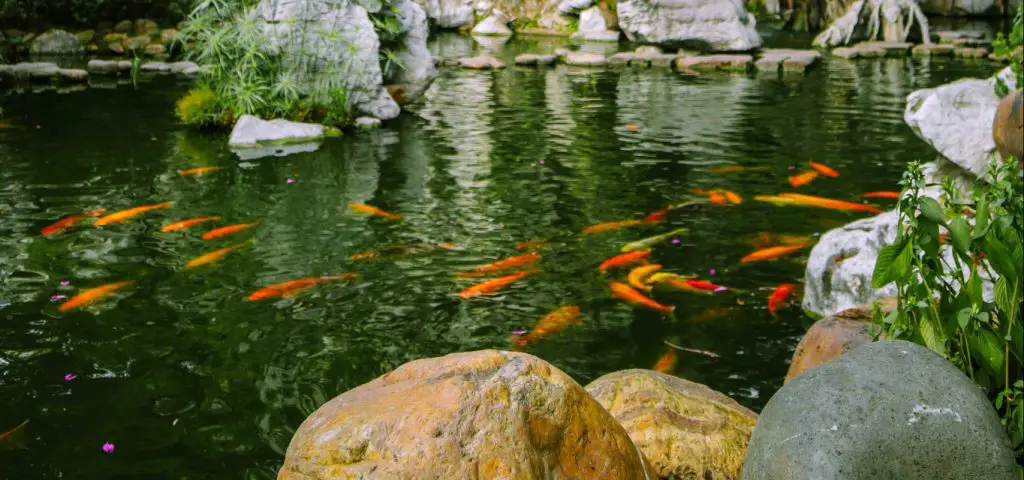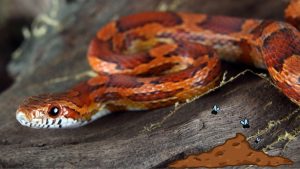Expert Guidelines and Tips
When it comes to building a koi pond, choosing the right depth is crucial for the health and safety of your fish. A koi pond that is too shallow can lead to suffocation and make your fish an easy target for predators. On the other hand, a pond that is too deep can also be problematic, making it difficult for your fish to swim and causing issues with water circulation.
So, how deep should a koi pond be? The answer depends on a few factors, including the size of your pond and the number of fish you plan to keep. Generally speaking, a minimum depth of 2-3 feet is recommended for a koi pond, but larger ponds may require greater depths to ensure proper water circulation and oxygenation. Additionally, the depth of your pond should also take into account the size and growth potential of your koi.
Why Pond Depth Matters
When building a koi pond, one of the most important factors to consider is the depth of the pond. The depth of the pond is essential for the survival and health of your koi fish, as well as the overall maintenance of the pond. In this section, we will discuss why pond depth matters.
Provides Enough Space for Koi Fish
Koi fish are known for their large size, and they require a lot of space to swim and thrive. The depth of the pond plays a crucial role in providing enough space for your koi fish to grow and move around freely. According to Pond Wiki, the recommended minimum depth for a koi pond is 2 feet. However, it is essential to consider the number of fish you plan to have in your pond and the size of the fish.
Helps Maintain a Stable Environment
The depth of the pond also plays a vital role in maintaining a stable environment for your koi fish. A deeper pond will have more stable water temperatures, which is crucial for the survival of your fish, especially during the winter months. According to Ponds by BEE, the optimum depth of at least 3 feet is key to maintain a good ecosystem in the pond.
Provides Protection Against Predators
The depth of the pond can also provide protection against predators. A deeper pond will make it more difficult for predators to catch your koi fish. However, it is important to consider other factors, such as the slope of the pond’s sides, to reinforce defense against predators. According to Pond Informer, a depth below 3 feet may be detrimental to koi, especially if your pond is accessible to wild animals.
Easier Maintenance
A deeper pond can also make maintenance easier. Deeper ponds require less frequent cleaning and maintenance, as they have a larger volume of water. According to Next Day Koi, the general rule-of-thumb is that a koi pond should be a minimum of three feet deep, and your pond should hold a minimum of 1,000 gallons of water.
In summary, the depth of the pond is a crucial factor to consider when building a koi pond. It provides enough space for your koi fish, helps maintain a stable environment, provides protection against predators, and makes maintenance easier.
Factors to Consider When Determining Pond Depth
When it comes to determining the depth of a koi pond, there are several factors that we need to take into consideration. These factors include filtration, pond size, water quality, oxygen, water volume, equipment, minimum depth, climate, care, costs, sunlight, and safety.
Firstly, filtration is an essential factor to consider when determining the depth of a koi pond. The depth of the pond should be deep enough to accommodate the necessary filters and equipment required for proper filtration. The size of the filters and equipment will depend on the size of the pond and the number of fish it contains.
Secondly, the size of the pond is another important factor to consider. A larger pond will require a greater depth to maintain proper water quality and oxygen levels. The depth of the pond should also be proportional to the size of the fish. Larger fish will require a deeper pond to swim comfortably.
Thirdly, water quality and oxygen levels are critical factors to consider when determining the depth of a koi pond. A deeper pond will provide a larger volume of water, which will help maintain better water quality and oxygen levels. Proper oxygenation is essential for koi health and can be achieved through the use of aerators or waterfalls.
Fourthly, water volume is another important factor to consider when determining the depth of a koi pond. A larger volume of water will help maintain better water quality and provide a more stable environment for the fish. The depth of the pond should be deep enough to accommodate the necessary water volume.
Fifthly, equipment is another factor to consider when determining the depth of a koi pond. The depth of the pond should be deep enough to accommodate any necessary equipment, such as pumps, filters, and heaters.
Sixthly, the minimum depth of the pond is an important consideration. A koi pond should have a minimum depth of 3 feet to provide adequate protection for the fish from predators and to ensure proper water quality.
Seventhly, climate is another factor to consider when determining the depth of a koi pond. In colder climates, a deeper pond will help maintain a more stable water temperature, which is essential for koi health.
Eighthly, care and maintenance are important factors to consider when determining the depth of a koi pond. A deeper pond may require more care and maintenance, such as regular water testing and cleaning.
Ninthly, costs are another factor to consider when determining the depth of a koi pond. A deeper pond may require more expensive equipment and maintenance, which can increase the overall cost of the pond.
Finally, safety is an important consideration when determining the depth of a koi pond. The pond should be deep enough to prevent children and pets from accidentally falling in, but not so deep that it poses a drowning risk. Additionally, the pond should be placed in a location that receives adequate sunlight but is also protected from excessive sun exposure.
How Deep Should a Koi Pond Be?
When it comes to koi ponds, the depth is an important factor to consider. The optimal depth for a koi pond varies depending on the surface area of the pond.
For small ponds, a depth of at least 4 feet is recommended. This depth will help prevent rapid water evaporation rates during the summer and will also afford your koi some protection from predation. However, if you have a larger pond, the depth can be increased up to 21 feet.
It is also important to consider the number of koi fish you plan to have in your pond. The general rule-of-thumb is that a koi pond should be a minimum of three feet deep, but it’s recommended that your pond hold a minimum of 1,000 gallons of water. This is because koi fish require a lot of space to swim and grow.
Moreover, the depth of your koi pond is crucial for the health and well-being of your koi fish. Koi fish need a cool and stable environment to thrive, and the depth of the pond plays a big role in maintaining the water temperature. A deeper pond will help keep the water cooler during the summer months and warmer during the winter months.
In summary, the optimal depth for a koi pond varies depending on the size of the pond and the number of koi fish you plan to have. A depth of at least 4 feet is recommended for small ponds, while larger ponds can be as deep as 21 feet. Remember to keep in mind the amount of water required for your koi fish to thrive and the importance of maintaining a cool and stable environment for their health.
Frequently Asked Questions
What is the minimum depth for a koi pond?
The recommended minimum depth for a koi pond is 2 feet. Any depth less than this will keep the fish in a suffocating condition. They will also become an easy target of predators. Such a depth is also necessary for the submerged pond plants like waterlilies.
Can a koi pond be too deep?
Yes, a koi pond can be too deep. If it is too deep, it can be difficult to maintain a stable water temperature. This can lead to health problems for the fish. Additionally, if the pond is too deep, it can be difficult to see and appreciate the fish.
How deep does a pond need to be for koi to survive the winter?
The depth of a pond needed for koi to survive the winter depends on the climate in which you live. In general, a depth of at least 3 feet is recommended to ensure that the water temperature remains stable throughout the winter. However, in colder climates, a depth of 4 feet or more may be necessary.
Is 4ft deep enough for koi?
Yes, 4ft is generally considered enough depth for koi. This depth will provide enough water volume to maintain a stable water temperature and ensure that the fish have enough room to swim. However, the ideal depth for a koi pond can vary depending on the size of the pond and the number of fish you plan to keep.
What is the ideal depth for a koi pond?
The ideal depth for a koi pond can vary depending on the size of the pond and the number of fish you plan to keep. In general, a depth of 4 to 5 feet is ideal. This depth provides enough water volume to maintain a stable water temperature and ensures that the fish have enough room to swim.
How does the size of a koi pond affect the depth needed?
The size of a koi pond can affect the depth needed. In general, larger ponds require a greater depth to maintain a stable water temperature. Additionally, the number of fish you plan to keep can also affect the depth needed. If you plan to keep a large number of fish, a deeper pond may be necessary to ensure that they have enough room to swim.
Author
-

Lawrence, the founder of Pet Ploy, established the website in mid-2023. With a lifelong love for pets, Lawrence has been surrounded by a variety of animals since his early years. From dogs and cats to guinea pigs, rabbits, fish, and more, he has experienced the joy of caring for a diverse range of pets. Drawing from his deep-rooted passion, Lawrence created Pet Ploy to share his knowledge and enthusiasm with fellow pet enthusiasts. Through the platform, he aims to provide valuable insights, tips, and resources to promote the well-being and happiness of pets everywhere.











